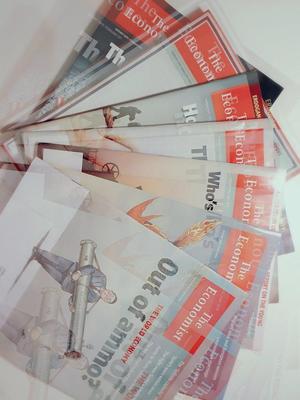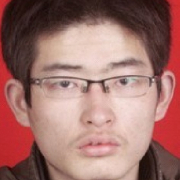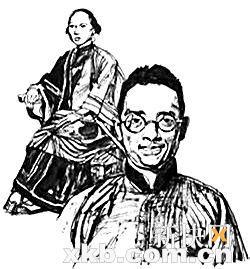去年的2月27日,一位59岁的硬件销售员完成了肺癌的最后一期治疗后被上海一家医院出院。医生告诉秦先生的儿子:所有病人住院不能超过2周,而他的父亲已经住了差不多三周了。第二天秦先生儿子给上海市委书记YUZS写了一封抱怨上海医疗体制的公开信并且在网上发表。在看来是中国官方回应形式的新象征,上海官方在一天后的新浪微博由俞书记本人予以回复:俞强调秦家在医保体系中被一些制度缺陷伤害,我不能保证所有的问题都能很快的解决,但我相信你的心痛也是我们的心痛。第二天,秦老先生逝世。在他生命中最后两个月里,他被4家不同的医院转院7此。秦先生的遭遇并非特例,媒体经常报道医院如何相互推诿重病人的,这也是医疗体制改革过半的证明。10年前情况更糟,此类情形已经成为定势,只有很少的公共或是商业医疗保险支付医疗费用。2009年后,意识到这种半市场化医疗体系所带来的愤怒,中国政府加速了改革步伐以使得健保体系更实用和能够承担。现在超过95%的人口已经被一些公共健康保险覆盖。2012出版的柳叶刀指出:这个计划平均支付大约一半患者的住院费用,而患者自行承担另外一半。
ON FEBRUARY 27th last year QinJinpei, a 59-year-old hardware salesman, was discharged from ahospital in Shanghai where he had been treated for the last stagesof lung cancer. A doctor told Mr Qin’s son, Qin Ling, that nopatient could stay longer than two weeks, and his father had stayedfor almost three. The next day Qin Ling wrote an open letter ofcomplaint to Shanghai’s then Communist Party secretary, YuZhengsheng, which he also posted on the internet. In a sign of thenew “responsiveness” of some parts of Chinese officialdom, theShanghai government posted an answer from Mr Yu a day later on SinaWeibo, a Twitter-like microblogging service. Mr Yu admitted thatthe Qin family had been “hurt by the flaws” in the health-caresystem. “I cannot guarantee that all the problems will be resolvedvery soon,” he said, “But I believe we all feel your pain.” Thenext day, the elder Mr Qin died. He had been turned away seventimes by four different hospitals in the last two months of hislife.
Mr Qin’s ordeal was hardly unique.News media frequently report how hospitals turn away gravely illpatients, the latest evidence of a half-reformed health-caresystem.
理论上这个体系较以前能给重病患者提供更好的服务,但实际上常常不是如此。患有小病的患者是医院欢迎的,但对于大病患者,医院出于费用控制,常常被驱逐。这是因为账款收集系统已经确定了医院保险治疗多少能从政府返还。医院担心如果他们超过了预算,他们就必须选择要么为超出的额度由医院自己买单或者将秦先生这样的病人赶出院。
In theory the system should offerbetter care than before for patients with serious diseases, but inpractice the opposite is often true. Patients with minor illnessesbenefit, but hospitals, under pressure to control mounting costs,turn away the very ill. This is because of the caps that have beenplaced on how much insured treatment a hospital can claim back fromthe government. Hospitals fear that, if they exceed the caps, theywill have to choose between paying the extra themselves or turfingout patients like Mr Qin.
随着医保覆盖范围的广度和深度加大,政府负担的医疗费用也迅速增加,由2001年的16%到2011年的30%。而患者仍然直接承担其中约1/3的费用,而社保和商业保险承担剩余的。在过去10年里,国家总的医疗费用增加了几乎5倍,2011年达到2400亿元。麦肯锡预计到2020年将增长到10000亿元,几乎是GDP的7%。届时医保系统在增加新的开支时将遇到麻烦。早些时候中国社科院预计到2017年地方的医保资金将出现赤字。

As health-care coverage hasbroadened and deepened, so the government’s share of healthspending has ballooned, from 16% in 2001 to 30% in 2011. Patientsstill directly bear more than a third of the total costsnationwide. Social and commercial insurance make up the rest. Overthe past decade the country’s total health expenditure has grownalmost fivefold, to an estimated 2.4 trillion yuan ($385 billion)in 2011. McKinsey, a consulting firm, expects it to reach $1trillion by 2020, roughly 7% of GDP. The health-care system willhave trouble absorbing the added costs. Preliminary estimates bythe Chinese Academy of Social Sciences in Beijing suggest that manylocal state-run health-insurance funds across China will begin torun deficits in 2017.
像美国一样,不必要和无效的健保成为了中国医保体系增加的一部分。医院被允许有15%的加价率,显然是鼓励工资低的内科医师开更贵的处方药物。这是和收费系统相关的,政府对医院的每项服务支付,而不管他的疗效,这也使得医生去执行不必要的检查和治疗。
As in America, inefficient andunnecessary care has contributed to the growing cost of Chinesehealth care. Hospitals are allowed to charge a 15% mark-up on theprice of medicines, which inevitably encourages low-paid physiciansto prescribe more expensive drugs. This is combined with a feesystem, in which hospitals are reimbursed by the government foreach service, regardless of the quality of care, thus givingdoctors an incentive to perform unnecessary tests andtreatments.
A decade ago the situation wasmuch worse and such scenarios would have been the norm, as therewas little health insurance—public or private—to defray the cost ofmedical treatment. The free health care of the Maoist era had, likemuch of China, become geared towards profit in the 1980s and 1990s,leaving most Chinese people to pay for most of their own treatment.After 2009, aware of the anger caused by the failedsemi-marketisation of the system, the Chinese governmentaccelerated reforms to make health care more accessible andaffordable. Now more than 95% of the population is covered by somepublic health insurance. The schemes pay for, on average, abouthalf of in-patients’ costs once they are admitted to hospital,according to a study published in 2012 in the Lancet, amedical journal. The patient must pay for the otherhalf.
医生,由你来买单
根据预算规则,医院对于超支部分要承担40%。二月份北京一位医生在网上发布一条她收到的同事的信息,被要求每位病人的治疗费用控制在10500元以下(1700美元)。信息显示如果超过了这个预算,那么超额部分将从他的工资扣除。类似严厉控制费用的措施很普遍。一位来自广州不愿透露姓名的医院管理者说,医院对于每个病人的额度是4300元。如果患者两周内没有康复,医院将尽一切可能让他们出院。于是出现了患者被一些不需要的检查和治疗过度治疗,同时重病患者没有得到足够治疗。北京大学的GUXIN说卫生部当局制定了乏善可陈的游戏规则,结果毁掉了游戏。
Doc, your paycheque
Underthe budget caps, hospitals are financially liable for up to 40% ofthe excess. In February a Beijing doctor posted online a messageshe received from a colleague, who had been ordered to keep thecost of treatment of each patient under 10,500 yuan ($1,700). Themessage said that if physicians exceeded the budget, the extraexpenses would be deducted from their own salaries. Such harshmeasures to control costs are widespread. A hospital administratorin Guizhou province, who did not want his name used, says that thecost of treating each patient at his hospital is capped at 4,300yuan. If a patient does not recover in two weeks, he says, “Wewould do whatever was necessary to get him out of here.” Sopatients are being both overtreated, with drugs and tests they donot need, and undertreated by not being admitted in the mostserious cases. Gu Xin of Peking University says the healthauthorities “devised poor rules of the game and, as a result, theyruined the game.”
当局强调医院禁止驱逐病人,否则他们将剥夺接受医保病人的资格。但没有任何报导显示医院接受过这样的处罚。政府运营的公立医院的显著垄断性使得很难被外界监督和竞争。尽管政府鼓励私立医院开设,他们仅仅主要面向富人阶层。绝大多数的人仍然前往公立医院就诊。
Local authorities stress thathospitals are prohibited from turning patients away, and they maybe disqualified from receiving patients if they do so, but therehave been no reports of any hospitals being punished in this way.With significant monopoly power, government-run public hospitalsare often shielded from outside inspection and competition, saysZhu Hengpeng of the Chinese Academy of Social Sciences. Though thegovernment is encouraging private hospitals to set up shop, theymainly treat the rich. Most people still go to publichospitals.
然而,严重疾病患者继续遭受煎熬。秦岭在父亲逝世后,一直在帮助晚期癌症患者能得到足够的治疗。但他说他在帮助病人获得足够治疗方面经常会有麻烦。
Meanwhile, the seriously illcontinue to suffer. Since his father’s death, Qin Ling has beentrying to help late-stage cancer patients receive adequate care.But he says he still often has trouble getting the patientsadmitted for treatment.
 爱华网
爱华网


